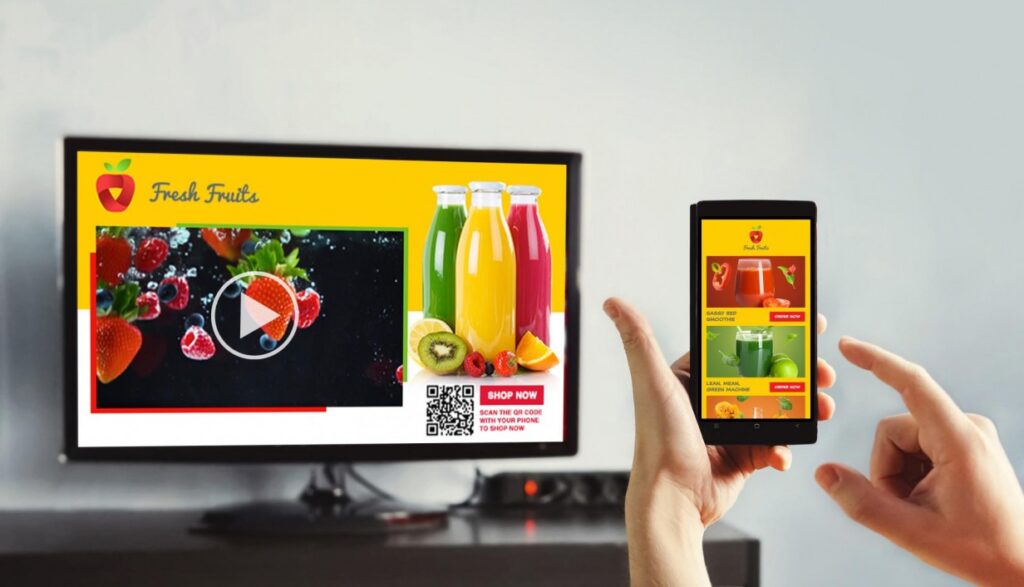Interactive Advertising: Engaging Audiences in a Digital Age
Interactive advertising represents a paradigm shift in how brands connect with consumers, leveraging digital technologies to create immersive, personalized, and engaging experiences. In today's digital age, where consumer attention spans are shorter and competition for engagement is fiercer than ever, interactive advertising offers a compelling solution to capture and retain audience interest. This comprehensive guide explores the concept of interactive advertising, its benefits, effective strategies, and real-world examples to inspire and inform marketers aiming to enhance audience engagement and drive business growth.
Understanding Interactive Advertising
Interactive advertising goes beyond traditional static ads by inviting consumers to participate actively in the ad experience. It leverages interactive elements such as quizzes, polls, games, augmented reality (AR), virtual reality (VR), and clickable videos to engage users and encourage interaction. By empowering consumers to interact with content, brands can forge deeper connections, gather valuable data, and drive desired actions more effectively.
Benefits of Interactive Advertising
- Increased Engagement: Interactive ads capture attention and encourage active participation, resulting in higher engagement rates compared to static ads. Users spend more time interacting with content, which can lead to better brand recall and message retention.
- Personalization: Interactive elements allow for personalized experiences tailored to individual preferences and behaviors. By collecting user data through interactions, brands can deliver targeted messaging and offers that resonate with each user segment.
- Data Collection and Insights: Interactive ads provide valuable data insights into consumer preferences, behaviors, and interests. Marketers can gather real-time analytics on user interactions, conversion rates, and campaign performance to optimize future advertising strategies.
- Brand Differentiation: Interactive advertising sets brands apart from competitors by offering unique and memorable experiences that captivate and delight audiences. It enhances brand perception and positions the brand as innovative and customer-focused.
Effective Strategies for Interactive Advertising
- Gamification: Incorporate gaming elements such as quizzes, puzzles, contests, and rewards to engage users and incentivize participation. Gamification encourages competition, challenges users' skills, and fosters a sense of achievement, driving deeper engagement with the brand.
- Augmented Reality (AR) and Virtual Reality (VR): Use AR and VR technologies to create immersive experiences that allow users to visualize products in their environment or interact with virtual simulations. These technologies enhance product understanding and provide a memorable brand experience.
- Interactive Videos: Create interactive video ads with clickable hotspots, branching narratives, or choose-your-own-adventure formats. Interactive videos increase viewer engagement by enabling users to control the storyline or explore additional content based on their interests.
- Polls and Surveys: Encourage user feedback and insights through interactive polls and surveys embedded within ads. Polls solicit opinions, preferences, and feedback, fostering two-way communication and demonstrating brand responsiveness.
- Social Media Engagement: Leverage interactive features on social media platforms such as Instagram polls, Facebook quizzes, or Twitter polls to engage followers and encourage sharing. User-generated content and social interactions amplify brand reach and authenticity.
Real-World Examples of Interactive Advertising
- IKEA Place App: IKEA's AR-powered app allows users to visualize furniture in their homes using augmented reality technology. This interactive experience helps customers make informed purchase decisions and enhances engagement with the IKEA brand.
- Coca-Cola's Share a Coke Campaign: Coca-Cola's personalized packaging campaign invited consumers to personalize bottles with their names and share photos on social media. This interactive campaign not only drove social sharing but also strengthened brand affinity and customer loyalty.
- McDonald's Interactive Game Ads: McDonald's created interactive mobile ads featuring simple games and challenges related to their products. These engaging ads increased user interaction and encouraged visits to nearby McDonald's locations.
Integrating Interactive Advertising with Overall Marketing Strategy
- Align with Brand Objectives: Ensure interactive advertising campaigns align with your brand's values, objectives, and target audience preferences. Maintain consistency in messaging and branding across all interactive touchpoints.
- Multi-Channel Integration: Integrate interactive ads across multiple digital channels, including websites, social media platforms, mobile apps, and email campaigns. Consistent cross-channel experiences reinforce brand messaging and maximize reach.
- Measure and Optimize: Track key performance indicators (KPIs) such as engagement rates, click-through rates (CTRs), conversion rates, and time spent interacting with content. Use data analytics to optimize ad performance and refine targeting strategies.
The Future of Interactive Advertising
As technology continues to evolve, the future of interactive advertising holds limitless possibilities. Innovations in artificial intelligence (AI), machine learning, and augmented reality (AR) will enable even more sophisticated and personalized ad experiences. Brands that embrace interactive advertising as a core strategy will not only stay ahead of the competition but also foster deeper connections with their audiences in the dynamic digital landscape.
Interactive advertising represents a transformative approach to engaging audiences in the digital age, offering unparalleled opportunities for brands to create memorable, personalized, and impactful experiences. By leveraging interactive elements such as gamification, AR/VR, interactive videos, and social media engagement, marketers can capture attention, drive engagement, and achieve measurable business results. Embrace the power of interactive advertising to differentiate your brand, foster customer loyalty, and lead innovation in the evolving digital marketplace.
Elevate Your Advertising with Interactive Experiences
Discover how David Delavari Advertising can help your brand leverage interactive advertising to engage and captivate your audience. Contact us today to explore innovative strategies and drive meaningful connections with your customers through interactive experiences.






































